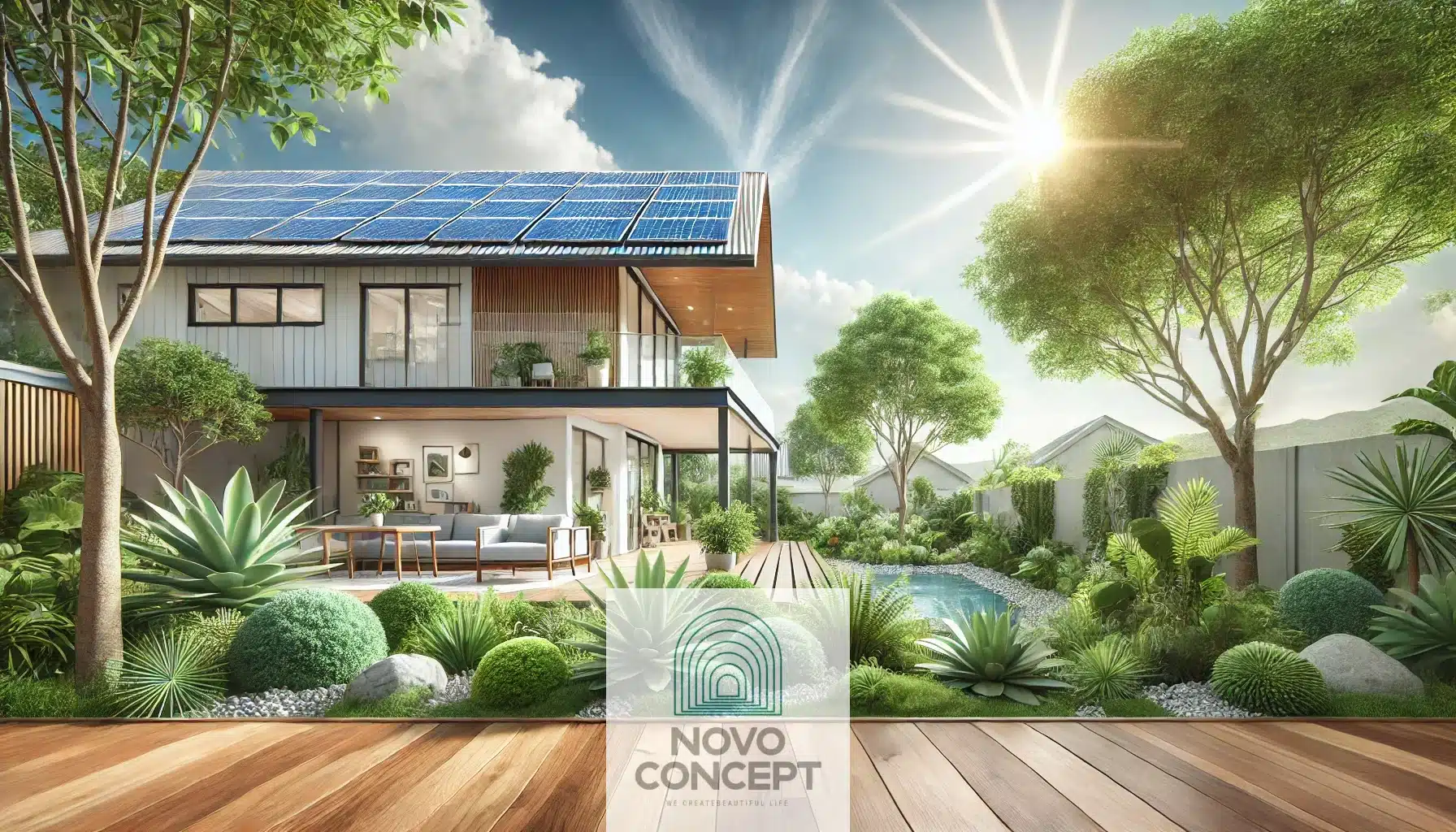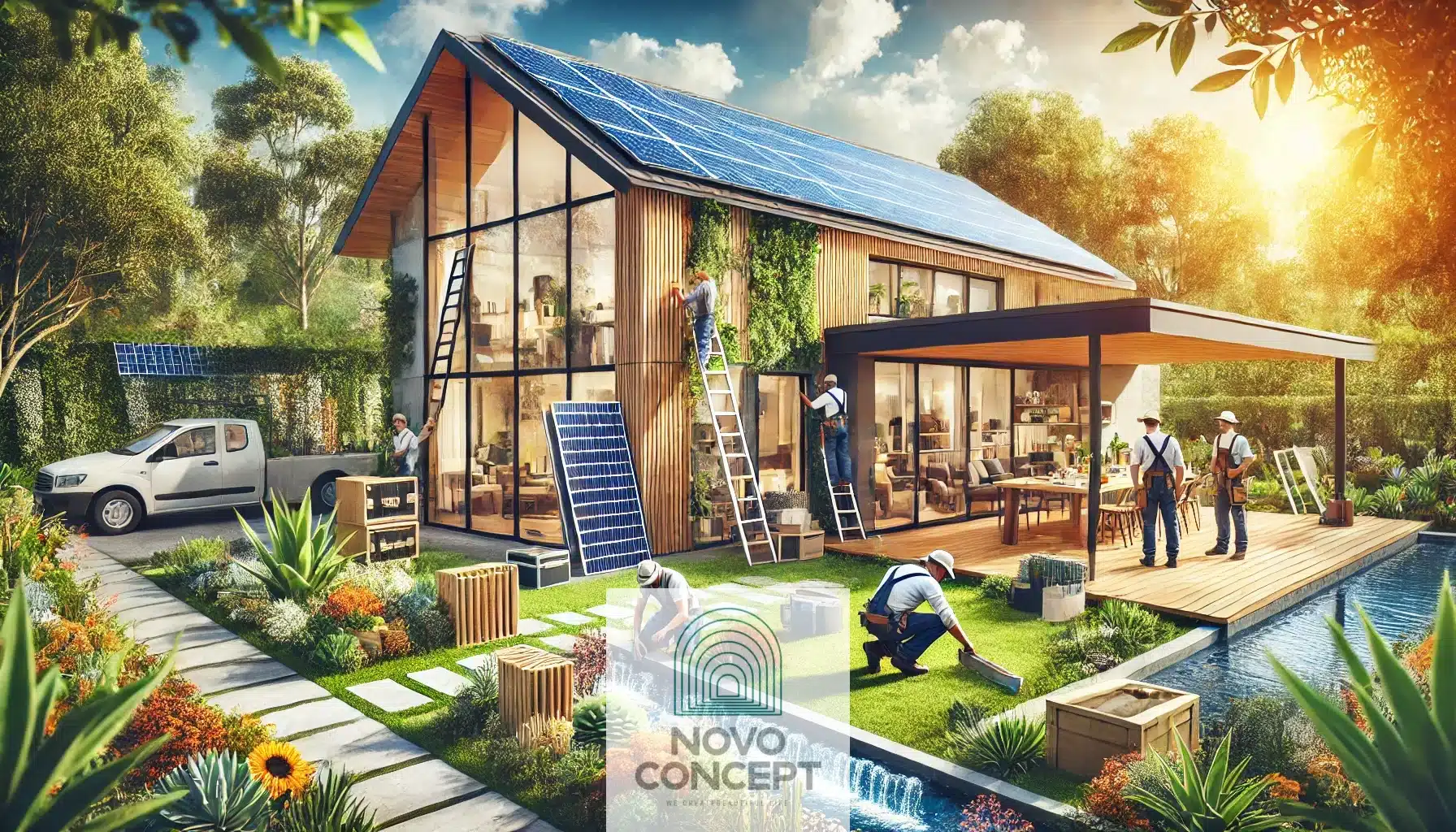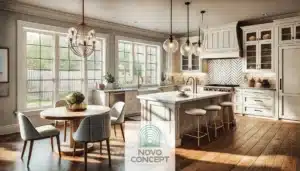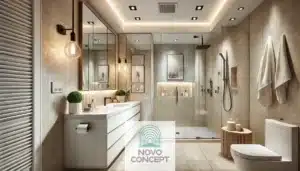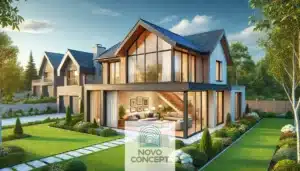In an era where eco-conscious living is becoming a top priority for homeowners, sustainable renovations are gaining traction as a way to enhance homes while minimizing environmental impact. Whole home renovations provide the perfect opportunity to not only modernize your living space but also contribute to a healthier planet. Whether you’re looking to lower your utility bills, increase your home’s energy efficiency, or reduce its carbon footprint, eco-friendly renovations offer numerous benefits.
This comprehensive guide explores practical, sustainable choices that you can incorporate into your home renovation project, including energy-efficient appliances, renewable materials, and water-saving fixtures. By blending these green practices with your design preferences, you can create an eco-friendly haven that benefits both you and the environment.
How to Make a Project Eco-Friendly
When embarking on an eco-conscious home renovation, there are several key strategies to ensure that your project not only looks great but also minimizes its environmental footprint. Below are some actionable steps to make your renovation project more sustainable.
1. Energy-Efficient Appliances and Lighting
One of the easiest ways to start your eco-friendly renovation is by replacing outdated appliances and light fixtures with energy-efficient models. Energy Star-rated appliances consume less electricity, which translates to lower energy bills and a reduced carbon footprint.
Consider swapping out incandescent bulbs for LED lighting, which is far more efficient and lasts longer. In the kitchen, opt for energy-efficient refrigerators, dishwashers, and stoves. These appliances not only save energy but are often designed with the latest technology, making them more effective at reducing waste and optimizing performance.
2. Windows and Insulation
Upgrading your windows and improving insulation is a fundamental aspect of energy-efficient home renovations. Energy-efficient windows are designed to minimize heat transfer, which helps maintain a comfortable indoor temperature year-round. Double or triple-glazed windows are an excellent investment as they help prevent heat loss during winter and keep cool air inside during the summer.
In addition to windows, improving the insulation of your home is a key strategy. High-quality insulation in walls, attics, and floors keeps your home’s temperature stable, reducing the need for heating and cooling systems. This not only saves energy but also reduces wear on HVAC systems, extending their lifespan.
3. Sustainable Materials
Opting for eco-friendly building materials can significantly reduce the carbon footprint of your renovation project. When choosing materials, consider renewable and recycled options, such as bamboo, reclaimed wood, recycled metal, and low-VOC paints. These materials are sourced with sustainability in mind and are often more durable and healthier for your home’s indoor environment.
Bamboo, for example, is a highly renewable resource that grows quickly and requires minimal energy to process. Reclaimed wood from old buildings or furniture offers a unique, rustic look while preventing valuable materials from going to waste. Low-VOC paints and finishes improve indoor air quality by reducing exposure to harmful chemicals.
4. Water-Efficient Fixtures
Water conservation is a crucial part of sustainable living. During a home renovation, consider installing water-saving fixtures such as low-flow faucets, showerheads, and toilets. These fixtures use significantly less water than traditional models, reducing your water bills and helping conserve this vital resource.
Additionally, rainwater harvesting systems can be an excellent addition to your home’s outdoor areas. These systems collect and store rainwater, which can then be used for irrigation or other non-potable purposes, further reducing your water consumption.
5. Renewable Energy Sources
Incorporating renewable energy sources, such as solar panels or wind turbines, into your home renovation can dramatically reduce your reliance on fossil fuels. Solar panels, in particular, are a popular option for homeowners looking to lower their electricity bills and reduce their environmental impact.
With advancements in solar technology, it’s now easier than ever to install solar panels that seamlessly integrate into your home’s design. In some cases, you may even be able to generate surplus energy that can be sold back to the grid, further offsetting your energy costs.
6. Eco-Friendly Flooring
Eco-conscious flooring options can play a major role in reducing the environmental impact of your renovation project. Sustainable materials like cork, bamboo, and reclaimed wood are durable, stylish, and renewable. Cork, for example, is harvested from the bark of cork oak trees, which can regenerate after harvesting, making it a highly renewable resource.
Reclaimed hardwood is another excellent option for those looking to preserve natural resources. Not only does it reduce the need for new timber, but it also adds a unique, vintage character to your space. All of these flooring materials are not only sustainable but also highly durable, making them a wise investment in the long term.
7. Smart Thermostats
Another way to optimize energy use in your home is by installing a smart thermostat. These devices learn your preferences and automatically adjust the temperature based on your habits, which helps reduce energy waste.
Smart thermostats can also be controlled remotely via smartphones, allowing you to make adjustments while you’re away. This means you can ensure that your home is energy-efficient even when you’re not there, saving you money on heating and cooling costs.
8. Waste Reduction
A significant aspect of an eco-friendly renovation is minimizing construction waste. Instead of throwing out old fixtures, furniture, or materials, consider reusing or recycling them. Many contractors can help you find creative ways to repurpose materials or donate items in good condition to charity.
Incorporating waste reduction strategies during demolition or renovation will help keep usable items out of landfills and contribute to a more sustainable building process.
9. Native Landscaping
If your renovation project extends to outdoor areas, consider using native plants in your landscaping design. Native plants are adapted to the local climate, requiring less water and maintenance than non-native species. This reduces the need for irrigation and pesticides, promoting biodiversity and reducing the overall environmental impact of your landscaping efforts.
Native plants also provide habitat for local wildlife, contributing to a healthier ecosystem. Choose plants that thrive in your region and help create a balanced, low-maintenance garden that supports the environment.
10. Proper Ventilation
Ensuring that your home has proper ventilation is essential for maintaining good indoor air quality. Poor ventilation can lead to the buildup of mold, allergens, and other pollutants that can affect your health.
Consider installing energy-efficient ventilation systems, such as heat recovery ventilators (HRVs) or energy recovery ventilators (ERVs). These systems exchange stale indoor air with fresh outdoor air, while minimizing energy loss, ensuring that your home remains both healthy and energy-efficient.
The Benefits of Eco-Friendly Home Renovations
Making your home renovation more sustainable offers numerous benefits that extend beyond environmental impact. Here are some key advantages of eco-friendly renovations:
1. Cost Savings
Eco-friendly renovations can lead to substantial long-term savings. With energy-efficient appliances, solar panels, and water-saving fixtures, you’ll notice a decrease in utility bills. Additionally, low-maintenance and durable materials will reduce the need for frequent repairs or replacements, saving you money in the long run.
2. Healthier Living Environment
Eco-friendly materials and proper ventilation contribute to a healthier indoor environment. Low-VOC paints, non-toxic flooring, and efficient air systems help reduce the presence of harmful chemicals and allergens in your home, improving air quality and overall well-being.
3. Environmental Impact
By incorporating sustainable practices, such as using renewable energy, conserving water, and reducing waste, you’re actively contributing to a more sustainable future. These efforts reduce your home’s carbon footprint, promote resource conservation, and protect the environment for future generations.
4. Increased Resale Value
As more buyers seek homes that align with their eco-conscious values, energy-efficient, sustainable homes are becoming increasingly desirable. Investing in eco-friendly renovations can enhance your home’s resale value, making it more attractive to potential buyers.
Choosing the Right Contractor for Eco-Friendly Renovations
When planning an eco-friendly home renovation, it’s crucial to partner with the right contractor. Look for professionals who have experience in sustainable building practices and are committed to eco-conscious solutions. Here are a few tips to ensure you choose the best contractor for your project:
- Experience and Expertise: Ensure the contractor has a track record of successful eco-friendly projects.
- Clear Communication: Discuss your vision for a sustainable home and ensure the contractor can bring your ideas to life.
- Local Knowledge: Working with contractors who understand local building codes, climate considerations, and available resources will help ensure your renovation is both practical and sustainable.
- Transparency: Choose contractors who are transparent about their materials, practices, and costs.
In Prosper, TX, contractors like Elite Remodeling specialize in eco-friendly renovations, offering tailored solutions to meet your sustainable living goals. Their team can guide you through every step of the process, from choosing materials to installing energy-efficient systems.
Conclusion
Eco-friendly home renovations are an investment in both your home’s future and the planet’s. By incorporating sustainable materials, energy-efficient appliances, and waste reduction strategies, you can create a home that not only looks great but also supports a healthier environment.
When working with trusted contractors, you’ll be able to seamlessly integrate green practices into your home renovation project, ensuring that your vision aligns with both your aesthetic desires and environmental goals. Ready to take the first step toward a greener, more sustainable home? Contact Novo Concept today and start transforming your space into an eco-friendly haven.

